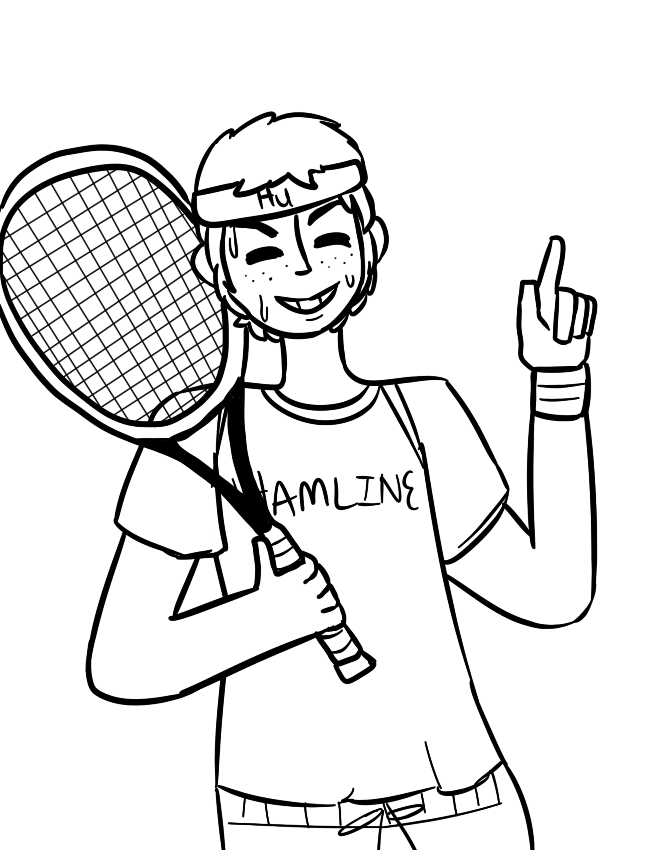Recruiting 101: Henning’s Way
Hamline’s Men’s Tennis Head Coach Jon Henning shares his way of recruiting.
March 25, 2015
After a relatively hot start in his first two years, resulting in a playoff berth, Head Coach Jon Henning and the men’s tennis team lost a great deal of senior leadership, which led to some tough seasons the past two years.
Improving the talent level will be a priority to compete with the likes of Gustavus Adolphus in one of the toughest conferences for men’s Division III tennis.
The Pipers are at a disadvantage competing on the recruiting trail against superior tennis programs. Gustavus is nationally renowned for its tennis program, as they have dominated the MIAC conference championships for over 30 years in a row. Success has brought them Division I level facilities and a perennial winning program. Without the facilities and on-court success to sell the program, Henning relies on Hamline’s unique positives to secure commitments.
“Whenever I talk to guys I focus on us being the hardest working team in the conference,” Henning said. “We have high character guys, exceptional academics — I think the women’s team has been academic All-American five years in a row, three for the men’s. That stuff is important so I focus on it a lot with the guys and girls we do have.”
Scholarships, better facilities, a national profile and the chance to play professionally can all combine to convince top athletes to pick Division I schools. For tennis, however, Division III schools can occasionally cherry pick top players from schools with bigger budgets.
This year Amherst University will have one 4-star and three 3-star players committing to their program. The University of Chicago, a Division III school, has a 5-star player signing with them this year, a coup usually reserved for a top-10 Division I program.
“The difference is that these guys are probably going into Pre-Med or some other thing, they probably have their financial situation all figured out, and they have the opportunity to be really successful at a small school,” Henning said.
While Henning would prefer not to rely on luck to land top recruits, a touch of serendipity can be good for a program. Junior David Yanagita is just one of those pickups. A South (Minneapolis) High graduate who left Minnesota to play tennis right after high school now finds himself competing for a familiar face in Henning.
“I kind of knew coach [Henning] already because during his student teaching, I guess right after he did undergrad, he taught my brother at South. So I kind of got to know him a little bit and see that he’s a good guy, a good coach,” said Yanagita.
Hungry to return home after two years in Oregon, Yanagita was hungry for an opportunity to play in a different environment.
“I was kind of burnt out from [playing] in that environment. Coming to a school like Hamline is great because I can put academics before tennis, while still being competitive and having a good time,” Yanagita said.
That environment is something Henning stresses in the design of his program. Athletes are supported with leadership training, career development and help reaching academic goals. Once a week, players are given a “Game Day” where they get to play around and shake loose from the grind of intense practices. Henning even coaches two of his half-brothers, adding to the family atmosphere around the team.
“The expectations placed on students have risen from when I was in school,” Henning said. “We weren’t expected to work more than 10 or 15 hours a week. Now students are working full-time jobs to get a leg up in their careers. We work on supporting students through that.”
Nowadays, Henning is focused less on the stars next to a player’s name and more on whether the player in question has the attitude and potential to improve over his career. That approach has set the Piper men up for success in 2016.
“We do a pretty good job off the court, but if you’re not a good fit, if you don’t love Hamline for what it is, you’re not going to get the most out of your experience,” Henning said.


